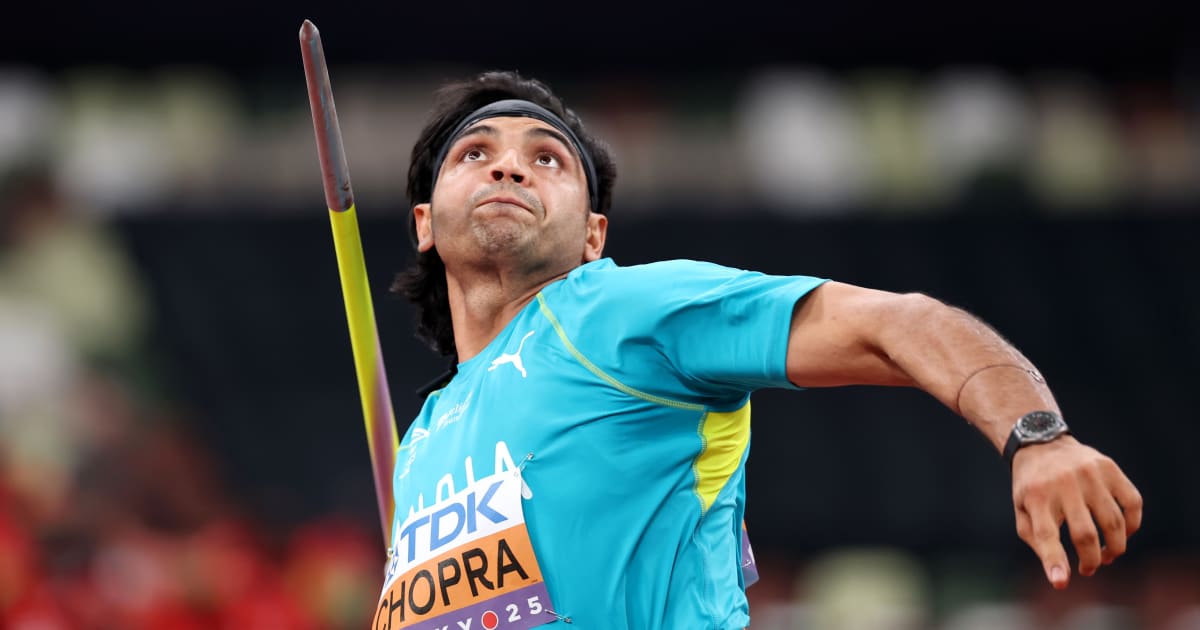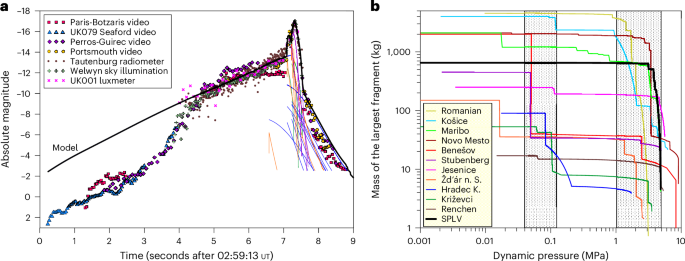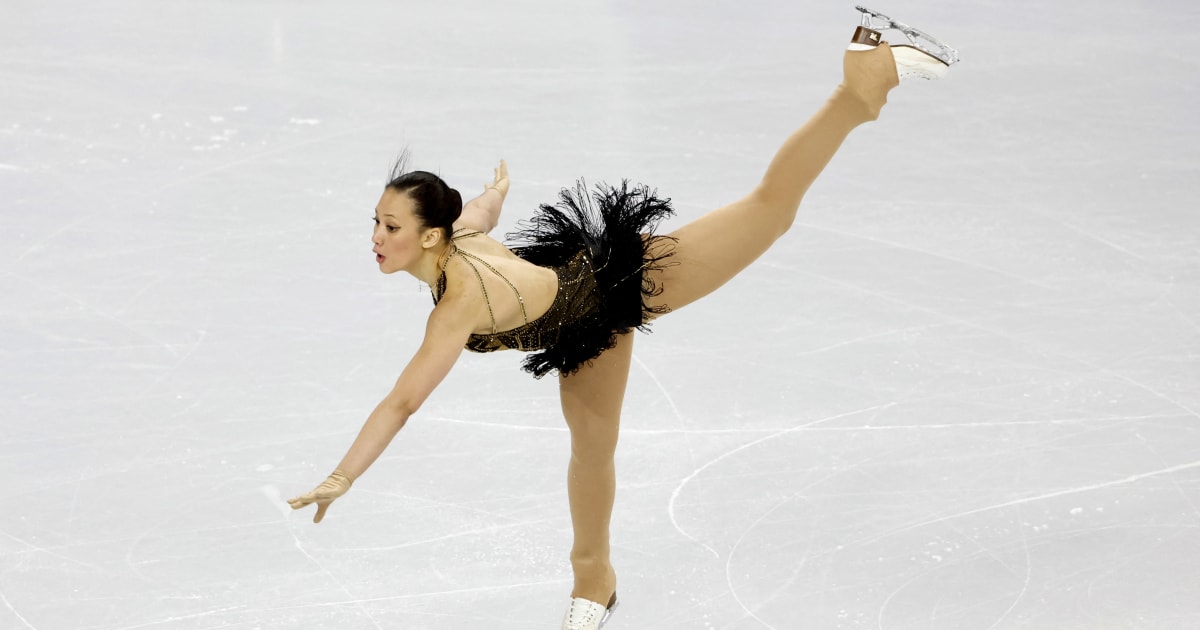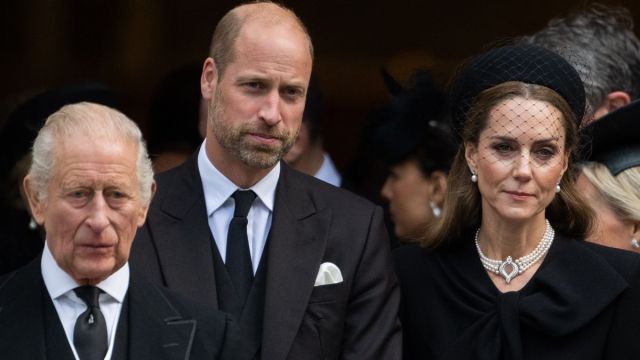Beeby, M., Ferreira, J. L., Tripp, P., Albers, S.-V. & Mitchell, D. R. Propulsive nanomachines: the convergent evolution of archaella, flagella and cilia. FEMS Microbiol. Rev. 44, 253–304 (2020).
Article
CAS
PubMed
Google Scholar
Denise, R., Abby, S. S. & Rocha, E. P. C. Diversification of the type IV filament superfamily into machines for adhesion, protein secretion, DNA uptake, and motility. PLoS Biol. 17, e3000390 (2019).
Article
PubMed
PubMed Central
Google Scholar
Makarova, K. S., Koonin, E. V. & Albers, S.-V. Diversity and evolution of type IV pili systems in Archaea. Front. Microbiol. 7, 667 (2016).
Article
PubMed
PubMed Central
Google Scholar
van Wolferen, M., Ajon, M., Driessen, A. J. M. & Albers, S.-V. Molecular analysis of the UV-inducible pili operon from Sulfolobus acidocaldarius. MicrobiologyOpen 2, 928–937 (2013).
Article
PubMed
PubMed Central
Google Scholar
Zolghadr, B., Klingl, A., Rachel, R., Driessen, A. J. M. & Albers, S.-V. The bindosome is a structural component of the Sulfolobus solfataricus cell envelope. Extremophiles 15, 235–244 (2011).
Article
CAS
PubMed
PubMed Central
Google Scholar
Albers, S.-V., Szabó, Z. & Driessen, A. J. M. Archaeal homolog of bacterial type IV prepilin signal peptidases with broad substrate specificity. J. Bacteriol. 185, 3918–3925 (2003).
Article
CAS
PubMed
PubMed Central
Google Scholar
Reindl, S. et al. Insights on FlaI functions in archaeal motor assembly and motility from structures, conformations and genetics. Mol. Cell 49, 1069–1082 (2013).
Article
CAS
PubMed
PubMed Central
Google Scholar
Nuno de Sousa Machado, J., Albers, S.-V. & Daum, B. Towards elucidating the rotary mechanism of the archaellum machinery. Front. Microbiol. 13, 848597 (2022).
Article
PubMed
PubMed Central
Google Scholar
Ghosh, A. & Albers, S.-V. Assembly and function of the archaeal flagellum. Biochem. Soc. Trans. 39, 64–69 (2011).
Article
CAS
PubMed
Google Scholar
Chaudhury, P. et al. The nucleotide-dependent interaction of FlaH and FlaI is essential for assembly and function of the archaellum motor. Mol. Microbiol. 99, 674–685 (2016).
Article
CAS
PubMed
Google Scholar
de Sousa Machado, J. N. et al. Autophosphorylation of the KaiC-like protein ArlH inhibits oligomerization and interaction with ArlI, the motor ATPase of the archaellum. Mol. Microbiol. 116, 943–956 (2021).
Article
PubMed
Google Scholar
Tsai, C.-L. et al. The structure of the periplasmic FlaG–FlaF complex and its essential role for archaellar swimming motility. Nat. Microbiol. 5, 216–225 (2020).
Article
CAS
PubMed
Google Scholar
Banerjee, A. et al. FlaF is a β-sandwich protein that anchors the archaellum in the archaeal cell envelope by binding the S-layer protein. Structure 23, 863–872 (2015).
Article
CAS
PubMed
PubMed Central
Google Scholar
Banerjee, A. et al. FlaX, a unique component of the crenarchaeal archaellum, forms oligomeric ring-shaped structures and interacts with the motor ATPase FlaI. J. Biol. Chem. 287, 43322–43330 (2012).
Article
CAS
PubMed
PubMed Central
Google Scholar
Li, Z., Rodriguez-Franco, M., Albers, S.-V. & Quax, T. E. F. The switch complex ArlCDE connects the chemotaxis system and the archaellum. Mol. Microbiol. 114, 468–479 (2020).
Article
CAS
PubMed
PubMed Central
Google Scholar
Lassak, K. et al. Molecular analysis of the crenarchaeal flagellum. Mol. Microbiol. 83, 110–124 (2012).
Article
CAS
PubMed
Google Scholar
Desmond, E., Brochier-Armanet, C. & Gribaldo, S. Phylogenomics of the archaeal flagellum: rare horizontal gene transfer in a unique motility structure. BMC Evol. Biol. 7, 106 (2007).
Article
PubMed
PubMed Central
Google Scholar
Lim, Y., Seo, J.-H., Giovannoni, S. J., Kang, I. & Cho, J.-C. Cultivation of marine bacteria of the SAR202 clade. Nat. Commun. 14, 5098 (2023).
Article
CAS
PubMed
PubMed Central
Google Scholar
Hug, L. A. et al. Community genomic analyses constrain the distribution of metabolic traits across the Chloroflexi phylum and indicate roles in sediment carbon cycling. Microbiome 1, 22 (2013).
Article
PubMed
PubMed Central
Google Scholar
Abby, S. S., Denise, R. & Rocha, E. P. C. Bacterial secretion system classification and evolution. In Bacterial Secretion Systems: Methods and Protocols (eds Journet, L. & Cascales, E.) 1–25 (Springer, 2024). https://doi.org/10.1007/978-1-0716-3445-5_1
Sutcliffe, I. C. Cell envelope architecture in the Chloroflexi_ a shifting frontline in a phylogenetic turf war. Environ. Microbiol. 13, 279–282 (2011).
Article
PubMed
Google Scholar
Jarrell, K. F., Albers, S.-V. & de Sousa Machado, J. N. A comprehensive history of motility and archaellation in Archaea. FEMS Microbes 2, xtab002 (2021).
Article
CAS
PubMed
PubMed Central
Google Scholar
Tammam, S. et al. PilMNOPQ from the Pseudomonas aeruginosa type IV pilus system form a transenvelope protein interaction network that interacts with PilA. J. Bacteriol. 195, 2126–2135 (2013).
Article
CAS
PubMed
PubMed Central
Google Scholar
Kale, V. et al. Litorilinea aerophila gen. nov., sp. nov., an aerobic member of the class Caldilineae, phylum Chloroflexi, isolated from an intertidal hot spring. Int. J. Syst. Evol. Microbiol. 63, 1149–1154 (2013).
Article
CAS
PubMed
Google Scholar
Gaisin, V. A. et al. Chloroflexus islandicus sp. nov., a thermophilic filamentous anoxygenic phototrophic bacterium from a geyser. Int. J. Syst. Evol. Microbiol. 67, 1381–1386 (2017).
Article
CAS
PubMed
Google Scholar
Herzog, B. & Wirth, R. Swimming behavior of selected species of Archaea. Appl. Environ. Microbiol. 78, 1670–1674 (2012).
Article
CAS
PubMed
PubMed Central
Google Scholar
Shahapure, R., Driessen, R. P. C., Haurat, M. F., Albers, S.-V. & Dame, R. T. The archaellum: a rotating type IV pilus. Mol. Microbiol. 91, 716–723 (2014).
Article
CAS
PubMed
Google Scholar
Schwarzer, S., Rodriguez-Franco, M., Oksanen, H. M. & Quax, T. E. F. Growth phase dependent cell shape of Haloarcula. Microorganisms 9, 231 (2021).
Article
CAS
PubMed
PubMed Central
Google Scholar
Kinosita, Y., Uchida, N., Nakane, D. & Nishizaka, T. Direct observation of rotation and steps of the archaellum in the swimming halophilic archaeon Halobacterium salinarum. Nat. Microbiol. 1, 16148–16148 (2016).
Article
CAS
PubMed
Google Scholar
Fukushima, S., Morohoshi, S., Hanada, S., Matsuura, K. & Haruta, S. Gliding motility driven by individual cell-surface movements in a multicellular filamentous bacterium Chloroflexus aggregans. FEMS Microbiol. Lett. 363, fnw056 (2016).
Article
PubMed
Google Scholar
Gambelli, L. et al. An archaellum filament composed of two alternating subunits. Nat. Commun. 13, 710 (2022).
Article
CAS
PubMed
PubMed Central
Google Scholar
Punjani, A., Rubinstein, J. L., Fleet, D. J. & Brubaker, M. A. CryoSPARC: algorithms for rapid unsupervised cryo-EM structure determination. Nat. Methods 14, 290–296 (2017).
Article
CAS
PubMed
Google Scholar
Jamali, K. et al. Automated model building and protein identification in cryo-EM maps. Nature 628, 450–457 (2024).
Article
CAS
PubMed
PubMed Central
Google Scholar
Teufel, F. et al. SignalP 6.0 predicts all five types of signal peptides using protein language models. Nat. Biotechnol. 40, 1023–1025 (2022).
Article
CAS
PubMed
PubMed Central
Google Scholar
Kreutzberger, M. A. B. et al. Convergent evolution in the supercoiling of prokaryotic flagellar filaments. Cell 185, 3487–3500.e14 (2022).
Article
CAS
PubMed
PubMed Central
Google Scholar
Meshcheryakov, V. A. et al. High-resolution archaellum structure reveals a conserved metal-binding site. EMBO Rep. 20, e46340 (2019).
Article
PubMed
PubMed Central
Google Scholar
Poweleit, N. et al. CryoEM structure of the Methanospirillum hungatei archaellum reveals structural features distinct from the bacterial flagellum and type IV pilus. Nat. Microbiol. 2, 1622 (2016).
Google Scholar
Gaines, M. C. et al. Towards a molecular picture of the archaeal cell surface. Nat. Commun. 15, 10401 (2024).
Article
CAS
PubMed
PubMed Central
Google Scholar
Nothaft, H. & Szymanski, C. M. Protein glycosylation in bacteria: sweeter than ever. Nat. Rev. Microbiol. 8, 765–778 (2010).
Article
CAS
PubMed
Google Scholar
López-Castilla, A. et al. Structure of the calcium-dependent type 2 secretion pseudopilus. Nat. Microbiol. 2, 1686–1695 (2017).
Article
PubMed
PubMed Central
Google Scholar
Korotkov, K. V. et al. Calcium is essential for the major pseudopilin in the type 2 secretion system. J. Biol. Chem. 284, 25466–25470 (2009).
Article
CAS
PubMed
PubMed Central
Google Scholar
Nelson-Sathi, S. et al. Origins of major archaeal clades correspond to gene acquisitions from bacteria. Nature 517, 77–80 (2015).
Article
CAS
PubMed
Google Scholar
Palmer, M. et al. Thermophilic Dehalococcoidia with unusual traits shed light on an unexpected past. ISME J. https://doi.org/10.1038/s41396-023-01405-0 (2023).
Gaines, M. et al. Unusual cell surfaces, pili and archaella of Thermoplasmatales archaea investigated by cryoEM. Preprint at Research Square https://doi.org/10.21203/rs.3.rs-5269562/v1 (2024).
Beaud Benyahia, B., Taib, N., Beloin, C. & Gribaldo, S. Terrabacteria: redefining bacterial envelope diversity, biogenesis and evolution. Nat. Rev. Microbiol. https://doi.org/10.1038/s41579-024-01088-0 (2024).
Buist, G., Steen, A., Kok, J. & Kuipers, O. P. LysM, a widely distributed protein motif for binding to (peptido)glycans. Mol. Microbiol. 68, 838–847 (2008).
Article
CAS
PubMed
Google Scholar
Sofer, S. et al. Perturbed N-glycosylation of Halobacterium salinarum archaellum filaments leads to filament bundling and compromised cell motility. Nat. Commun. 15, 5841 (2024).
Article
CAS
PubMed
PubMed Central
Google Scholar
Wilde, A. & Mullineaux, C. W. Motility in cyanobacteria: polysaccharide tracks and type IV pilus motors. Mol. Microbiol. 98, 998–1001 (2015).
Article
CAS
PubMed
Google Scholar
Nußbaum, P. et al. An oscillating MinD protein determines the cellular positioning of the motility machinery in Archaea. Curr. Biol. 30, 4956–4972.e4 (2020).
Article
PubMed
Google Scholar
Altegoer, F. et al. Structural insights into the mechanism of archaellar rotational switching. Nat. Commun. 13, 2857 (2022).
Article
CAS
PubMed
PubMed Central
Google Scholar
Livak, K. J. & Schmittgen, T. D. Analysis of relative gene expression data using real-time quantitative PCR and the (2^{-{Delta}{Delta}C_{T}}) method. Methods 25, 402–408 (2001).
Article
CAS
PubMed
Google Scholar
Sivabalasarma, S., de Sousa Machado, J. N., Albers, S.-V. & Jarrell, K. F. Archaella isolation. Methods Mol. Biol. 2646, 183–195 (2023).
Article
CAS
PubMed
Google Scholar
Emsley, P. & Cowtan, K. Coot: model-building tools for molecular graphics. Acta Crystallogr. D 60, 2126–2132 (2004).
Article
PubMed
Google Scholar
Afonine, P. V. et al. Towards automated crystallographic structure refinement with phenix.refine. Acta Crystallogr. D 68, 352–367 (2012).
Article
CAS
PubMed
PubMed Central
Google Scholar
Liebschner, D. et al. Macromolecular structure determination using X-rays, neutrons and electrons: recent developments in Phenix. Acta Crystallogr. D 75, 861–877 (2019).
Article
CAS
Google Scholar
Goddard, T. D. et al. UCSF ChimeraX: meeting modern challenges in visualization and analysis. Protein Sci. 27, 14–25 (2018).
Article
CAS
PubMed
Google Scholar
Schindelin, J. et al. Fiji: an open-source platform for biological-image analysis. Nat. Methods 9, 676–682 (2012).
Article
CAS
PubMed
Google Scholar
Azuaje, F. Review of “Data Mining: Practical Machine Learning Tools and Techniques” by Witten and Frank. Biomed. Eng. Online 5, 51 (2006).
Article
PubMed Central
Google Scholar
Ershov, D. et al. TrackMate 7: integrating state-of-the-art segmentation algorithms into tracking pipelines. Nat. Methods 19, 829–832 (2022).
Article
CAS
PubMed
Google Scholar
Witwinowski, J. et al. An ancient divide in outer membrane tethering systems in bacteria suggests a mechanism for the diderm-to-monoderm transition. Nat. Microbiol. 7, 411–422 (2022).
Article
CAS
PubMed
Google Scholar
Garcia, P. S., Gribaldo, S. & Borrel, G. Diversity and evolution of methane-related pathways in Archaea. Annu. Rev. Microbiol. 76, 727–755 (2022).
Article
CAS
PubMed
Google Scholar
Nayfach, S. et al. A genomic catalog of Earth’s microbiomes. Nat. Biotechnol. 39, 499–509 (2021).
Article
CAS
PubMed
Google Scholar
Seemann, T. Prokka: rapid prokaryotic genome annotation. Bioinformatics 30, 2068–2069 (2014).
Article
CAS
PubMed
Google Scholar
Chaumeil, P.-A., Mussig, A. J., Hugenholtz, P. & Parks, D. H. GTDB-Tk v2: memory friendly classification with the genome taxonomy database. Bioinformatics 38, 5315–5316 (2022).
Article
CAS
PubMed
PubMed Central
Google Scholar
Price, M. N., Dehal, P. S. & Arkin, A. P. FastTree 2—approximately maximum-likelihood trees for large alignments. PLoS ONE 5, e9490 (2010).
Article
PubMed
PubMed Central
Google Scholar
Balaban, M., Moshiri, N., Mai, U., Jia, X. & Mirarab, S. TreeCluster: clustering biological sequences using phylogenetic trees. PLoS ONE 14, e0221068 (2019).
Article
CAS
PubMed
PubMed Central
Google Scholar
Parks, D. H., Imelfort, M., Skennerton, C. T., Hugenholtz, P. & Tyson, G. W. CheckM: assessing the quality of microbial genomes recovered from isolates, single cells, and metagenomes. Genome Res. 25, 1043–1055 (2015).
Article
CAS
PubMed
PubMed Central
Google Scholar
Olm, M. R., Brown, C. T., Brooks, B. & Banfield, J. F. dRep: a tool for fast and accurate genomic comparisons that enables improved genome recovery from metagenomes through de-replication. ISME J. 11, 2864–2868 (2017).
Article
CAS
PubMed
PubMed Central
Google Scholar
Johnson, L. S., Eddy, S. R. & Portugaly, E. Hidden Markov model speed heuristic and iterative HMM search procedure. BMC Bioinformatics 11, 431 (2010).
Article
PubMed
PubMed Central
Google Scholar
Mistry, J. et al. Pfam: the protein families database in 2021. Nucleic Acids Res. 49, D412–D419 (2021).
Article
CAS
PubMed
Google Scholar
Minh, B. Q. et al. IQ-TREE 2: new models and efficient methods for phylogenetic inference in the genomic era. Mol. Biol. Evol. 37, 1530–1534 (2020).
Article
CAS
PubMed
PubMed Central
Google Scholar
Kalyaanamoorthy, S., Minh, B. Q., Wong, T. K. F., von Haeseler, A. & Jermiin, L. S. ModelFinder: fast model selection for accurate phylogenetic estimates. Nat. Methods 14, 587–589 (2017).
Article
CAS
PubMed
PubMed Central
Google Scholar
Minh, B. Q., Nguyen, M. A. T. & von Haeseler, A. Ultrafast approximation for phylogenetic bootstrap. Mol. Biol. Evol. 30, 1188–1195 (2013).
Article
CAS
PubMed
PubMed Central
Google Scholar
Néron, B. et al. MacSyFinder v2: improved modelling and search engine to identify molecular systems in genomes. Peer Community J. 3, e28 (2023).
Katoh, K. & Standley, D. M. MAFFT Multiple Sequence Alignment software version 7: improvements in performance and usability. Mol. Biol. Evol. 30, 772–780 (2013).
Article
CAS
PubMed
PubMed Central
Google Scholar
Capella-Gutiérrez, S., Silla-Martínez, J. M. & Gabaldón, T. trimAl: a tool for automated alignment trimming in large-scale phylogenetic analyses. Bioinformatics 25, 1972–1973 (2009).
Article
PubMed
PubMed Central
Google Scholar
Letunic, I. & Bork, P. Interactive Tree Of Life (iTOL) v5: an online tool for phylogenetic tree display and annotation. Nucleic Acids Res. 49, W293–W296 (2021).
Article
CAS
PubMed
PubMed Central
Google Scholar
Abramson, J. et al. Accurate structure prediction of biomolecular interactions with AlphaFold 3. Nature 630, 493–500 (2024).
Article
CAS
PubMed
PubMed Central
Google Scholar
Yariv, B. et al. Using evolutionary data to make sense of macromolecules with a “face-lifted” ConSurf. Protein Sci. 32, e4582 (2023).
Article
CAS
PubMed
PubMed Central
Google Scholar
Harrison, K. J., Crécy-Lagard, Vde & Zallot, R. Gene Graphics: a genomic neighborhood data visualization web application. Bioinformatics 34, 1406–1408 (2018).
Article
CAS
PubMed
Google Scholar
Crooks, G. E., Hon, G., Chandonia, J. M. & Brenner, S. E. WebLogo: a sequence logo generator. Genome Res. 14, 1188–1190 (2004).
Article
CAS
PubMed
PubMed Central
Google Scholar
Kanehisa, M., Sato, Y. & Kawashima, M. KEGG mapping tools for uncovering hidden features in biological data. Protein Sci. 31, 47–53 (2022).
Article
CAS
PubMed
Google Scholar










